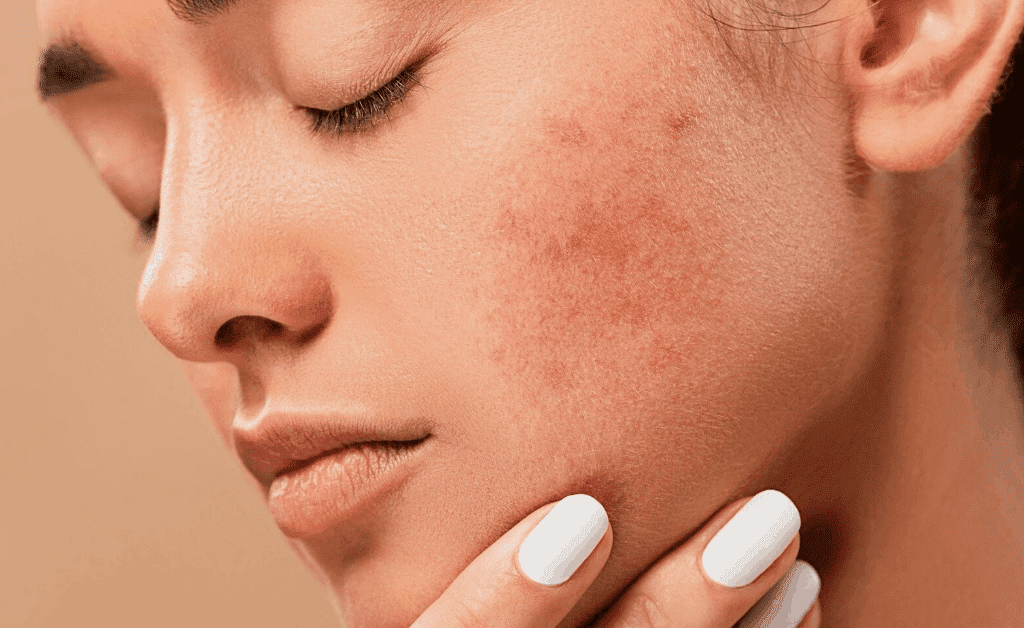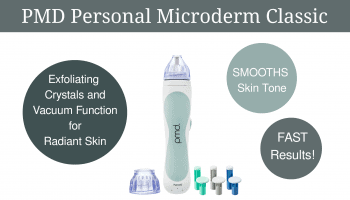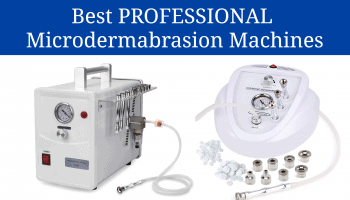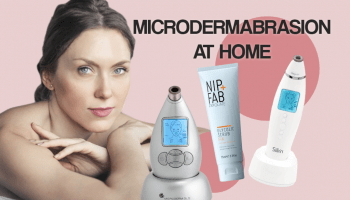If you’re thinking about getting microdermabrasion for the treatment of acne scars, you might be onto a good idea.
Treating acne can be a long battle. Many of us spend many years (and plenty of money!) trying to find that magic combination that finally sees it off. But even when our acne finally clears up, scars can remain, knocking our confidence.
As an acne sufferer, you’ll know that and lotions are pretty powerless when it comes to treating scars. Moisturisers and oils with a high vitamin E content may help with newer scars, but older, deeper scars often seem like they’re there to stay.
This is where microdermabrasion comes in.
Table of Contents
What is Microdermabrasion?
Microdermabrasion is a type of mechanical exfoliation. There are two types in use, crystal microdermabrasion or diamond tip microdermabrasion.
Crystal microdermabrasion is where tiny crystals particles are blasted onto the skin. This action disturbs and loosens dead skin cells. A handheld machine or device is used to perform this procedure and there are also scrubs that incorporate the very same crystals.
The other kind in use today – diamond tip microdermabrasion, is where the microderm device has a diamond tip. The ‘abrasion’ caused by the rough surfaces of the device’s tip gently distresses the outer layer of the skin.
Microdermabrasion is the ‘next step up’ from exfoliation. It can be carried out professionally, in a salon or dermatologist’s office, or more conveniently, using an at-home microdermabrasion device. Clinical microdermabrasion is sometimes more powerful. You may see better results with this route, especially as you’ll have a professional administering the treatment.
Does Microdermabrasion Help With Acne Scars?
The way microdermabrasion benefits the skin is twofold. The physical motion of the exfoliating diamond tip helps the skin to shed it’s fine outer layer, including dead cells, and the dirt and debris that comes with it.
Most microdermabrasion machines, especially professional-grade ones, will be accompanied by a suction function, which spirits away all of the dirt and debris as its removed.
The second way microdermabrasion affects the skin and targets acne scarring specifically is via the ‘distress’ it causes. This prompts a healing reaction. When the outer layer of skin is disturbed, the body increases cell turnover in order to replace it. This is how microdermabrasion is used to treat acne scarring. It works with your skin, encouraging it to get rid of old and damaged tissue, and keeping newer, healthier skin coming through underneath.
Is Microdermabrasion Good For Acne Scars?
Does it Really Work?
Microdermabrasion is one of the few proven ways to reduce acne scarring as well as any type of surface-level scarring on the skin. Many people have seen transformative results after a few months of regular microdermabrasion treatments.
That being said, although microdermabrasion can be used very successfully to ‘treat’ acne scars, it may not be possible to remove them entirely. Perhaps a better term than ‘remove’ is ‘reduce’.
The debt of your scarring as well as how long you’ve had it will determine the results you can achieve. Older scar tissue is generally harder to remove.
Microdermabrasion Acne – What About Deep Scarring?
Microdermabrasion is a surface-level treatment and great news for those with light scarring. Unfortunately, because it is surface level, it can’t work on certain types of deeper scars.
Some of these deeper scars are referred to as ‘pockmarks’, ‘ice-pick scars’, and ‘boxcar scars’. Because these very deep scars penetrate below the epidermis, they can’t be reached with a microdermabrasion tool.
But all is not lost!
Microdermabrasion will still dramatically improve the general tone and appearance of your overall complexion. For deeper scarring, you might want to consider dermabrasion. This is a much more abrasive treatment as it stips away several layers of skin. Sedation, as well as down-time, is normal.
Other treatments that work for deeper acne scarring include micro-needling or resurfacing laser treatment.
How Many Treatments Will I Need for Acne Scars?
Microdermabrasion isn’t a one-stop-shop whether you have it at a professional clinic or dermatologist or do it yourself with a home microdermabrasion machine.
You’ll need several treatments, usually starting with 1-2 per month. This is such an effective procedure with so many benefits, including smoother, brighter skin, treatment of fine lines and wrinkles, and clearing/reduction of pores, that you will see results after just one session.
However, without continued treatment, your complexion will return to its previous state, and your acne scars will persist. The reason for this is skin cells are constantly renewing.
Without any microdermabrasion, skin cells renew around every 28 days. Fresh, healthy cells generate in a regular cycle, however, the full effects may not be seen if the skin has any build-up of dead cells, dirt, or grime.
Usually, you’ll need at least 3 months’ worth of treatment before you start to notice a real difference with your scars.
Microdermabrasion at Home for Acne Scars
One of the main reasons people decide to try microdermabrasion at home is due to the costs involved. Microdermabrasion is not a cheap treatment, especially when you’ll need a course of treatments to get good results. It’s easier to perform treatments at home whenever and you want. With the aid of a simple home microdermabrasion device, you can get great results.
These home devices work in pretty much the same way as those you’ll find in a salon or spa to strip away the outer layer of skin, revealing the new, healthier skin cells below.
If trying home microdermabrasion for acne scars concerns you at all, it might be worthwhile to visit your doctor or dermatologist first. This way you can get a feel for what professional treatment involves as well as an initial assessment.
How To Boost Your Results
Microdermabrasion is great groundwork for a better, healthier-looking complexion overall. But there are things you can supplement it with to maximize your results.
A good skincare routine works wonders both for aftercare and for boosting the healing rate of scar tissue.
This should include:
- Lots of moisture – both applied topically morning and night, and by drinking lots of water throughout the day. Applying moisturizer to clean, slightly damp skin helps to draw and pack moisture in. Even better – dampen the skin with a rosewater spray before putting on your moisturizer.
- Botanical oils – all plant oils are rich in fatty acids and vitamins A, C and E. These essential nutrients help to rebuild the skin, keep cell turnover high, repair and heal the skin, and keep the moisture barrier healthy and intact. Apply these products after moisturiser, helping to lock all the goodness in.
- Some carefully applied makeup can take care of the rest. Sheer (as opposed to matte or full-coverage) foundations are often best for acne-scarred skin. The opposite is often assumed to be true because those self-conscious about their skin often try and conceal it with heavy makeup. However, too much product can actually draw attention to an uneven skin surface. If you only have a matte foundation, you can dilute it with a little moisturizer or plant oil, or use a damp brush to thin out the product.
Are There Any Risks With Microdermabrasion?
Microdermabrasion poses no known risks and there’s no downtime following your appointment. Skin may appear red afterward and there could be a little swelling. You’ll be able to leave the clinic or salon and go straight back to your ordinary activities – minus any makeup of course! Any redness and swelling should abate after 30 minutes.
The only situations where microdermabrasion might cause harm is if you have open wounds or active cystic acne. Chronic skin conditions such as eczema, dermatitis, or psoriasis are also not suitable. It can exacerbate these conditions and cause even more inflammation.
Microdermabrasion for acne scars is safe and works but not recommended in the cases above, either professionally or using a home device.






